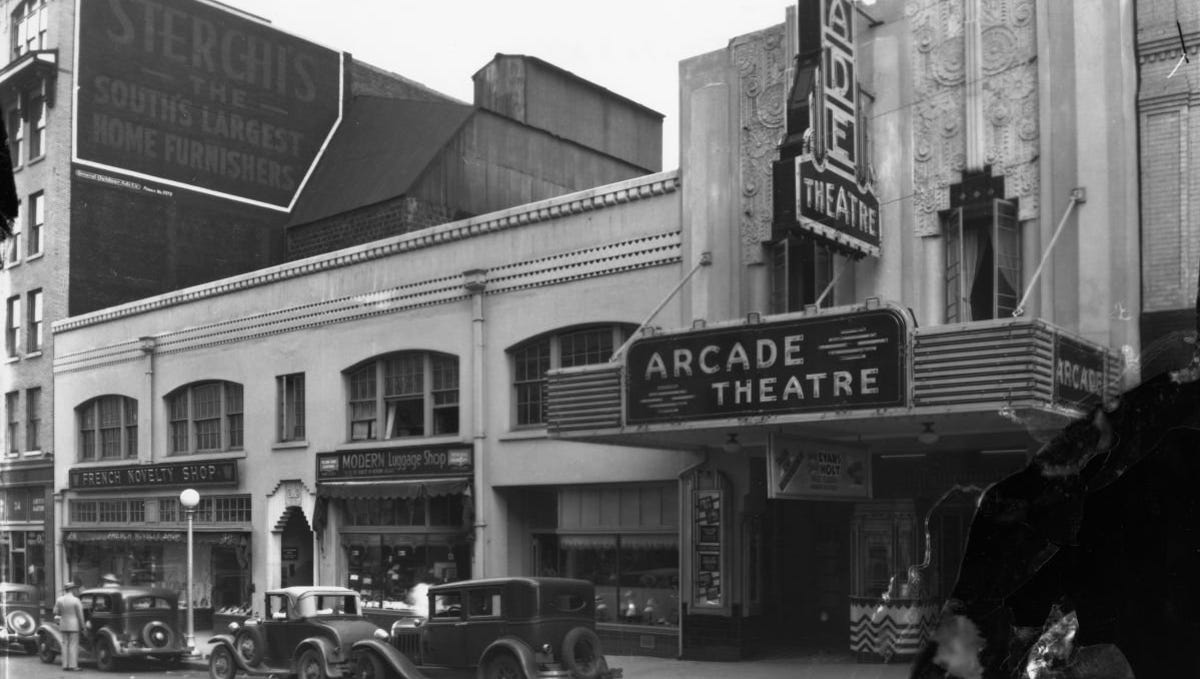Bill Foley
| Jacksonville Florida Times-Union
Jacksonville launches NAVI, nation’s first autonomous vehicle service
The Jacksonville Transportation Authority has launched Navi, the nation’s first rubber-tired autonomous vehicle shuttle service. Here’s a preview.
(Note: This column originally appeared in the Nov. 1, 1997 edition of the Florida Times-Union.)
Even the ordinary once was extraordinary.
What’s more ordinary in Jacksonville than one-way downtown streets?
Turn them two-way and you’d have havoc with a two-car funeral.
For generations, Forsyth Street has been one way east, Adams Street one way west.
Nobody thinks about it. It is the immutable way of Jacksonville. It is like the sun rising in the east and setting in the west.
But 60 years ago, it was weirder than tree frogs.
Before Nov. 8, 1937, Forsyth and Adams had been two-way streets roughly 115 years, since Isaiah Hart platted the town.
Hart did not plan on a Broad Street bottleneck, however.
Hart did not even plan Broad Street, because there was a swamp there, which in a simpler time was good enough reason.
And Hart did not plan on automobiles, of which there were too many coming and going over the Broad Street Viaduct in 1937.
During morning and evening rush hours, two-way intersections at Forsyth and Adams streets resembled bumper-car rides at the carnival.
(Broad Street was the main feeder to downtown. There were no expressways. Bay Street was less traveled, being a byway of bawdy iniquity most commonly frequented by persons up to no good, and Water Street was traveled mostly by cats.)
Mayor George Blume appointed a committee during the summer of 1937 to study downtown traffic. The committee suggested the one-way idea to Blume and city police.
Blume and the police announced the one-way traffic plan for Forsyth and Adams streets the first week of November 1937, rather unilaterally, which infuriated downtown merchants, annoyed the City Commission and confounded the bus company.
In the highest tradition of municipal aplomb, the change also occured the week of the Georgia-Florida football game, the Ringling Bros. Barnum and Bailey Circus and the Armistice Day parade.
Adams Street merchants delivered a petition to the mayor with 150 signatures protesting the plan. The one-way streets would “work an irreparable harm and danger to merchants,” the petition said.
The City Commission, the politically charged executive committee in Jacksonville’s unique form of government, voted unanimously against the idea. The commission resolution said the move was unnecessary and would be a hardship for downtown merchants, and implied moreover it was a dumb idea because it was Blume’s.
The Motor Transit Co. protested the change, but said it would not object if the streets were made one-way in the other direction — Forsyth to the west and Adams to the east. The bus company’s major worry was that bus drivers would have to make left turns, a challenging maneuver then as now.
Blume, however, was out of the office that day, being initiated into membership in an unnamed fraternal organization, and the plan proceeded unchecked. Future police chief Luther Reynolds, then a traffic lieutenant, initiated the change on Nov. 8 a Monday.
Three one-way arrows were posted at each intersection from Broad to Ocean streets, one on each side of the street and one at the traffic light. Police stood by to assist motorists who had not heard of the change or who were unwilling to abide by it, or both.
And there were both, that opening day and for many days thereafter. wrong-way offenders’ common rejoinder to police when advised they were on a one-way street was, “But I am only going one way!”
Happily, there were no major accidents caused by one-way drivers, inasmuch as motorists continued to travel only in the right-hand lane for many weeks to come.
Once Jaxons realized they could drive in both lanes on one-way streets, and that left turns worked best when assayed from the left lane, things would work out OK, Reynolds said.
And so they have, for 60 years. Driving east on Adams and west on Forsyth has become second nature to Jacksonville motorists, even though there is little traffic in downtown Jacksonville now, and the complaints of downtown merchants subsided years before their extinction.
